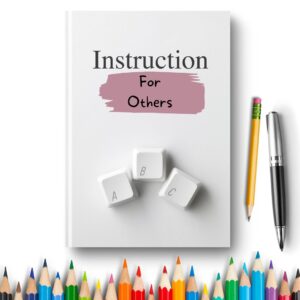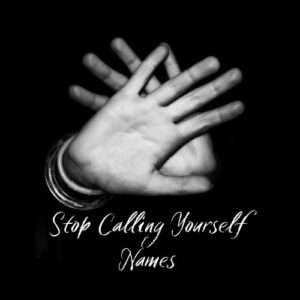We all have instruction books for the people in our lives. These are the ways we want them to be different than they are. Maybe you want your partner to be more considerate, you’d like your boss to be more appreciative, your kids to be more respectful or your friends to be more attentive. As a result, we create these mental instruction books authored by our thoughts and influenced by our experiences, culture, history, and personality.
We are deeply invested in our respective books, convinced we know the way others should be.
Commonly motivated by love, we try covertly or overtly to enforce our instructions on the people in our lives. Compliance happens but more often than not problems arise and we find ourselves at odds with the people who matter most. It doesn’t have to be this way.
Most of the time we’re not even aware of how this dynamic plays out in our relationships. Instead, we see ourselves as having reasonable expectations for the people in our lives. When our expectations are not met we feel disappointed, confused, and hurt.
What do you do when others don’t comply with your instruction book? What do you make it mean when the people in your life don’t live up to your expectations?
It’s easy to forget that as adults we have freedom of action and agency. This means you and I don’t have to do things for others and they don’t have to do things for us. A lot of couples’ therapy posits that healthy relationships involve identifying one’s needs and expecting loved ones to meet them. But there’s a difference between and need and a preference and when we position our loved ones as responsible for our security or happiness, we disempower ourselves and undermine our relationship.
Also, when we make our happiness dependent on someone else’s actions we can’t help but become very invested in controlling their actions. This becomes problematic because most of us don’t like to be controlled and trying to get others to do what we want in opposition to their own desire is frustrating and demoralizing business. Besides, it’s hard enough to control ourselves! I’ve found relationships do much better when people give each other permission to be themselves and instead put attention on taking care of their own emotional health and happiness.
This is not about not asking for what you want because that’s an important part of every relationship. Instead, it’s about not making your emotional well-being dependent on someone complying with what you want when they aren’t wanting or willing to do so.
Despite this, having instruction books for others does offer some valuable advantages. Parents obviously need them for children but as adults they can be an expression of care and protection as well as a way of maintaining attachment and preserving connection. Plus as long as we are committed to getting someone to change, we don’t have to accept the reality of who they are and as such, we avoid the pain of loss or disconnection while nurturing hope. Our instruction books also serve to keep the focus on someone else, and away from looking at ourselves too closely. We’d often rather feel frustrated or resentful with another than anxious or sad in ourselves. With the attention outward we can sidestep responsibility for deciding who we want to be or how we want to show up with the other person.
Letting go of our imagined ideal of who we want someone to be requires us to see them for who they really are. Seeing the truth of another can create pressure to take action, make decisions or own our part which can be a frightening prospect best avoided.
There’s nothing wrong with having a library of instruction books for the people in our lives as long as they serve us and our relationships. If not, change starts with getting clear and honest with yourself about exactly what you want. Focus on one person in your life and write out all the things you want them to do; how you want them to act, and what you want them to feel, think, say, and do. Then ask yourself why you want them to be different than they are. What are the reasons you think they should change? Next, imagine them being exactly the way you want in all your listed ways. What would it be like for you? Specifically, what would you get to think and feel? This answer is your blueprint to change. The reason you have an instruction book is that you believe if they followed your instructions you would get to feel something – maybe love, security, or understanding – not because of what the other person did but because of what you would think about what they did.
Let’s say you have an instruction that your partner give you a Valentine’s Card and when you receive it you get to think,”I am loved,” and you feel love. This is awesome except if or when your partner doesn’t follow your instruction because then you tell yourself, “I’m not loved,” and you feel unlovable, not because you didn’t get the card but because of what you make it mean. In truth, you can be making that card mean love while your partner is following your instruction from a place of resentment or compliance. Ultimately our instruction books come from a desire to feel certain things based on a belief that others’ actions create our feelings. I would argue it’s not others’ behavior that causes our feelings but what we make their behaviors mean. So ultimately we want them to do things because we want to feel things and we believe the only way to have those feelings is for them to take certain actions. I have found this to be a thought error and encourage you to investigate this for yourself. Here is a worksheet to help you begin this investigation.



